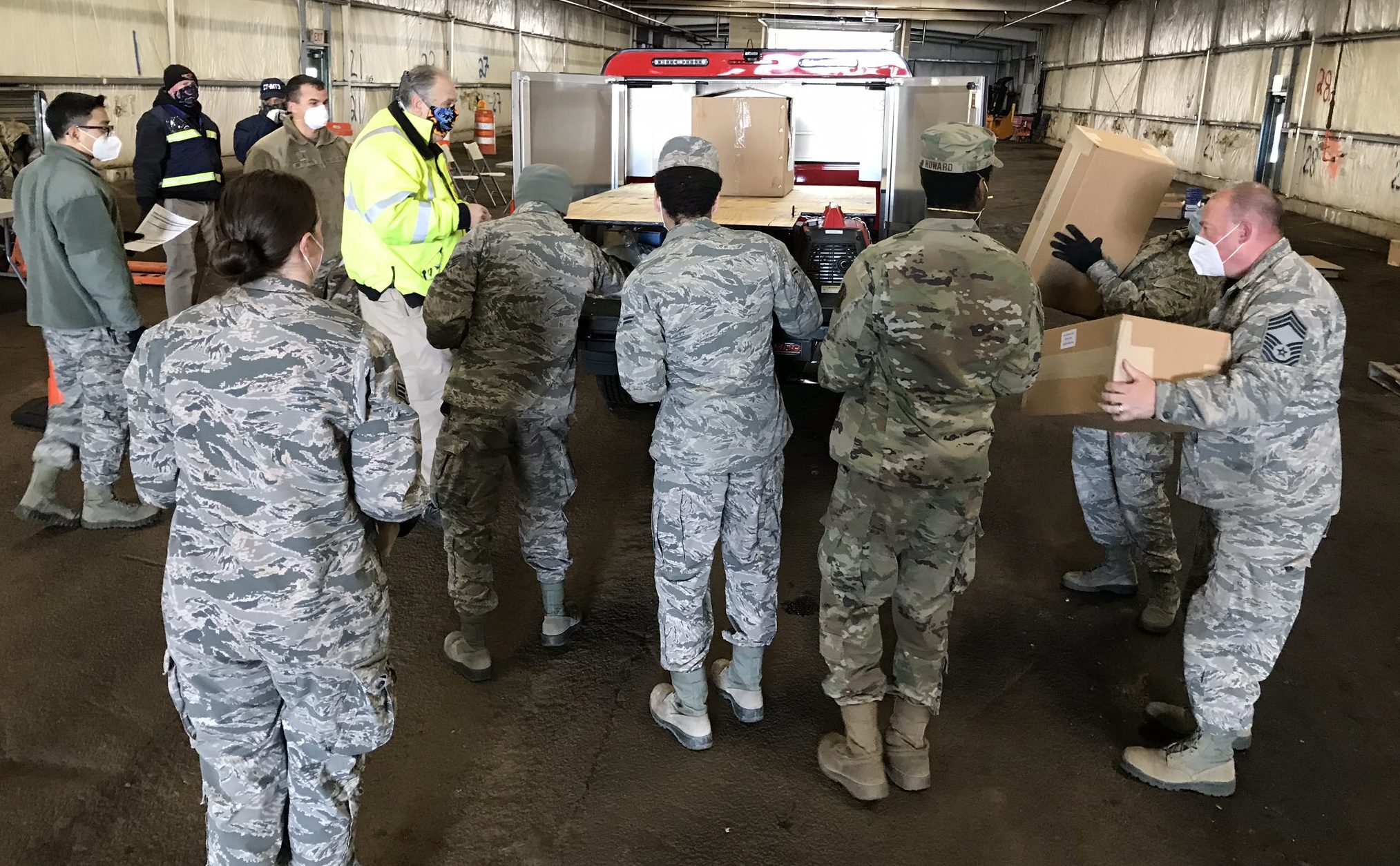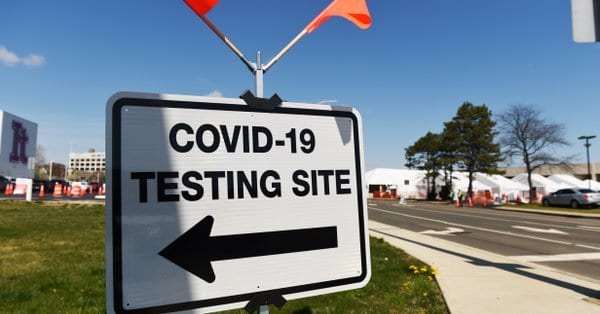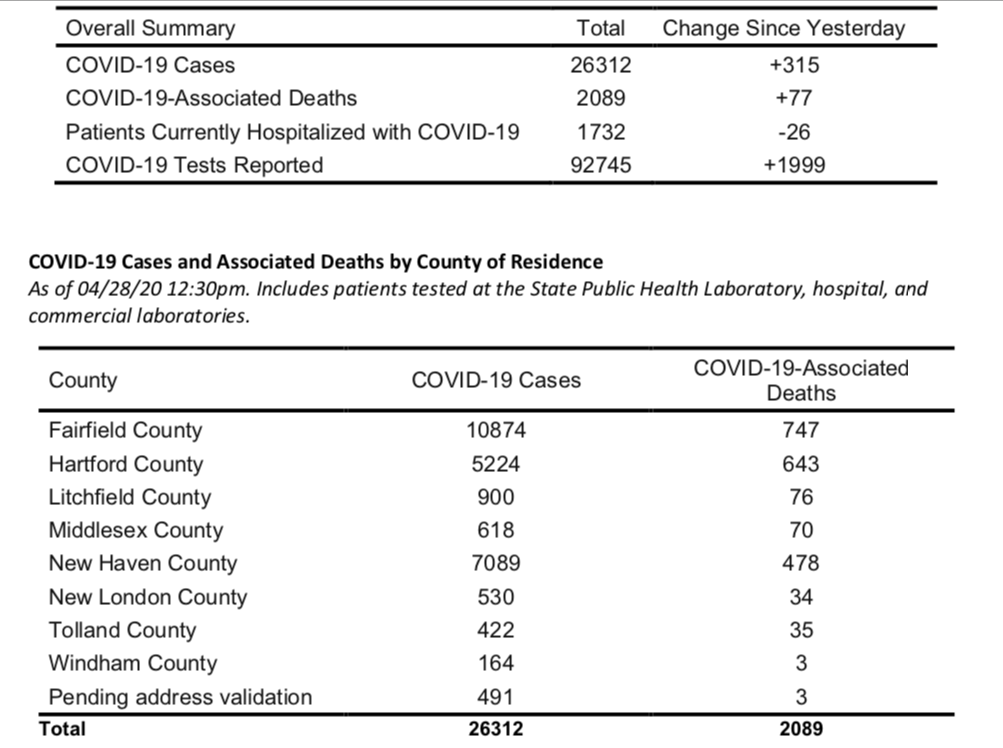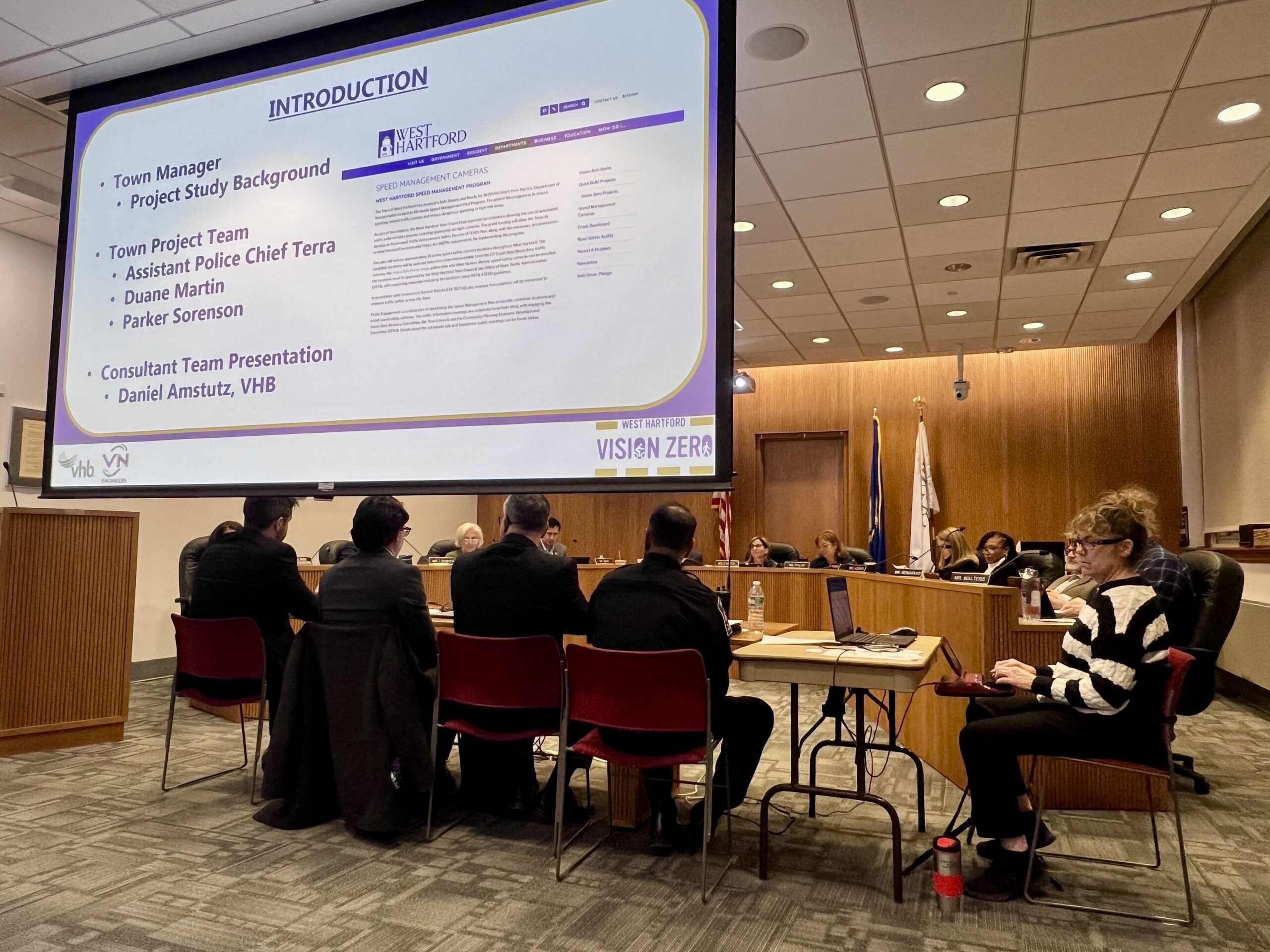As Connecticut Hits COVID-19 Peak, Focus Shifts to Tracing and Testing

Audio By Carbonatix

Connecticut National Guardsmen helped state officials Tuesday to distribute PPE to town representatives at a distribution center in West Hartford. This PPE is scheduled to be further distributed by the municipalities to local small businesses in the coming days. CT National Guard Twitter (courtesy of CTMirror.org)
Aggressive COVID-19 testing and contact tracing are the keys to easing restrictions on commerce that have left 439,000 residents unemployed.

Courtesy of CTMirror.org
By Mark Pazniokas and Gregory B. Hladky, CTMirror.org
West Hartford-specific information provided by Ronni Newton, We-Ha.com
An aggressive program of COVID-19 testing and contact tracing will be the key to Connecticut safely easing the restrictions on commerce that have left 439,000 residents jobless, a level of unemployment that hasn’t been seen since the 1930s, Gov. Ned Lamont said Tuesday.
Hospitalizations related to the novel coronavirus dropped for a sixth consecutive day and new laboratory-confirmed cases increased by only 315, the lowest number in weeks. Both statistics were signs that the pandemic is peaking.
In West Hartford, only one additional positive COVID-19 case was reported Tuesday, for a total of 285. There was also one additional COVID-19-related fatality in West Hartford, bringing the total to 48.
With 88 new fatalities statewide, the death toll is now 2,089, keeping Connecticut in the top ranks of the states hardest hit by COVID-19, as measured by per-capita deaths. New York and New Jersey are first and second.

Lamont gave little sign, however, that Connecticut can expect widespread re-openings of businesses when his current closure order expires on May 20. The new testing and tracking exists so far only as an outline, not a program.
“We’re currently in the early phases of this implementation,” said Kristen Soto, the syndromic surveillance coordinator for the state Department of Public Health.
Connecticut is partnering with Microsoft to provide the DPH and the state’s 64 local health districts an online tool to speed the tracking of people exposed to the coronavirus after restrictions are eased. Hundreds of academic volunteers also will be recruited.
But the tracking system will not be ready until the third week of May, when the state expects testing capability to be greatly expanded. The goal is to provide testing of asymptomatic people who are at risk or were in contact with those tested positive for COVID-19.
The system is necessary to “prevent small clusters or individual cases from turning into larger community outbreaks,” Soto said. “Without contact tracing, people might spread COVID-19 unknowingly.”
Lamont said public safety will guide him, but he acknowledged the high cost that his closure orders have imposed on Connecticut’s economy, its businesses, and workers.
“We have a very high unemployment rate,” Lamont said, noting the jobless rate is now “north of 20 percent, the likes of which we haven’t seen since the Great Depression.”
But the governor said those huge unemployment numbers should be a short-term phenomenon and that the increasing amounts of unemployment compensation going out to Connecticut residents will inject money back into the economy.
Tracing every case
Soto and the state epidemiologist, Dr. Matthew Cartter, participated in the governor’s daily briefing by video conferencing. They said the new online tool will give all health districts, most of which are regional, access to the same tracking data.
“Contact tracing is really difficult to do when you are near the peak, which is where we are right now,” Cartter said. But the cases should fall dramatically by mid-May, when testing will be expanded. “Our goal is to perform a contact tracing of every case.”
He said it is clear from the hospitalization trend lines that Connecticut is in a better place now than experts expected it would be a month ago, a result he attributed to the social-distancing measures ordered by the governor at the recommendation of public-health officials.
“The trends are encouraging, but the number of cases we still have are far too many,” Cartter said, urging continued social distancing to slow the spread of COVID-19.
Cartter also warned that “there is always a chance of a second wave” of the pandemic. He noted that, although the disease appears to be easing now in places in the U.S., experts expect that the coronavirus is likely to become more of a problem in the southern hemisphere.
“It is likely we will see a second wave in the fall,” Cartter said. But he added that, should a second wave occur, Connecticut would be far better prepared to handle the outbreak.
But Cartter said there is still no hard evidence that a person who has recovered from COVID-19 will be immune to the disease in the future.
“This is the million dollar question,” Cartter said. He said experts believe someone who has recovered from coronavirus would be immune for several months, but it is still unknown if that immunity would last longer.
The tri-state area of New York, New Jersey, and Connecticut has been the hardest hit in the U.S., with the pandemic’s epicenter located in metropolitan New York, and Connecticut has the third highest death rate in the nation.
One reason for that, Cartter said, is because Connecticut is one of the few states that includes in its pandemic death reports people who probably died of the virus but had not tested positive for the disease.
“Many states don’t count probable COVID-19 deaths,” he said.
Half of Connecticut’s deaths have occurred in nursing homes, according to data released by the state last week. Josh Geballe, Lamont’s chief administrative officer, said state teams supported by National Guard medical personnel have now inspected 216 of the state’s 350 nursing homes and assisted living facilities, checking for appropriate supplies of masks, gowns and other personal protection for staff and treatment of residents.
Cartter said those teams are concentrating on how nursing homes and assisted living facilities are using protective equipment and implementing infection control measures.
“We have seen a leveling off of cases in nursing homes,” Cartter said. “Things have improved but there is still a lot of work to do.”
The governor is being advised on how to ease COVID-19 restrictions by a volunteer advisory group lead by an epidemiologist and a former corporate chief executive. But the group’s operation outside of state government and the lack of input from lawmakers has prompted complaints by some Republican legislators.
“I’m making the calls on how fast we open … on what we open,” Lamont said, insisting his panel of experts discussing those issues is “purely an advisory board.”
Lamont said he needed the best possible advice as swiftly as possible and the panel he chose was the best way to do that. The governor said members of the panel will this week join him at a COVID-19 news conference and will answer any and all questions about their deliberations.
Reprinted with permission of The Connecticut Mirror. The author can be reached at [email protected].
Like what you see here? Click here to subscribe to We-Ha’s newsletter so you’ll always be in the know about what’s happening in West Hartford! Click the blue button below to become a supporter of We-Ha.com and our efforts to continue producing quality journalism.



